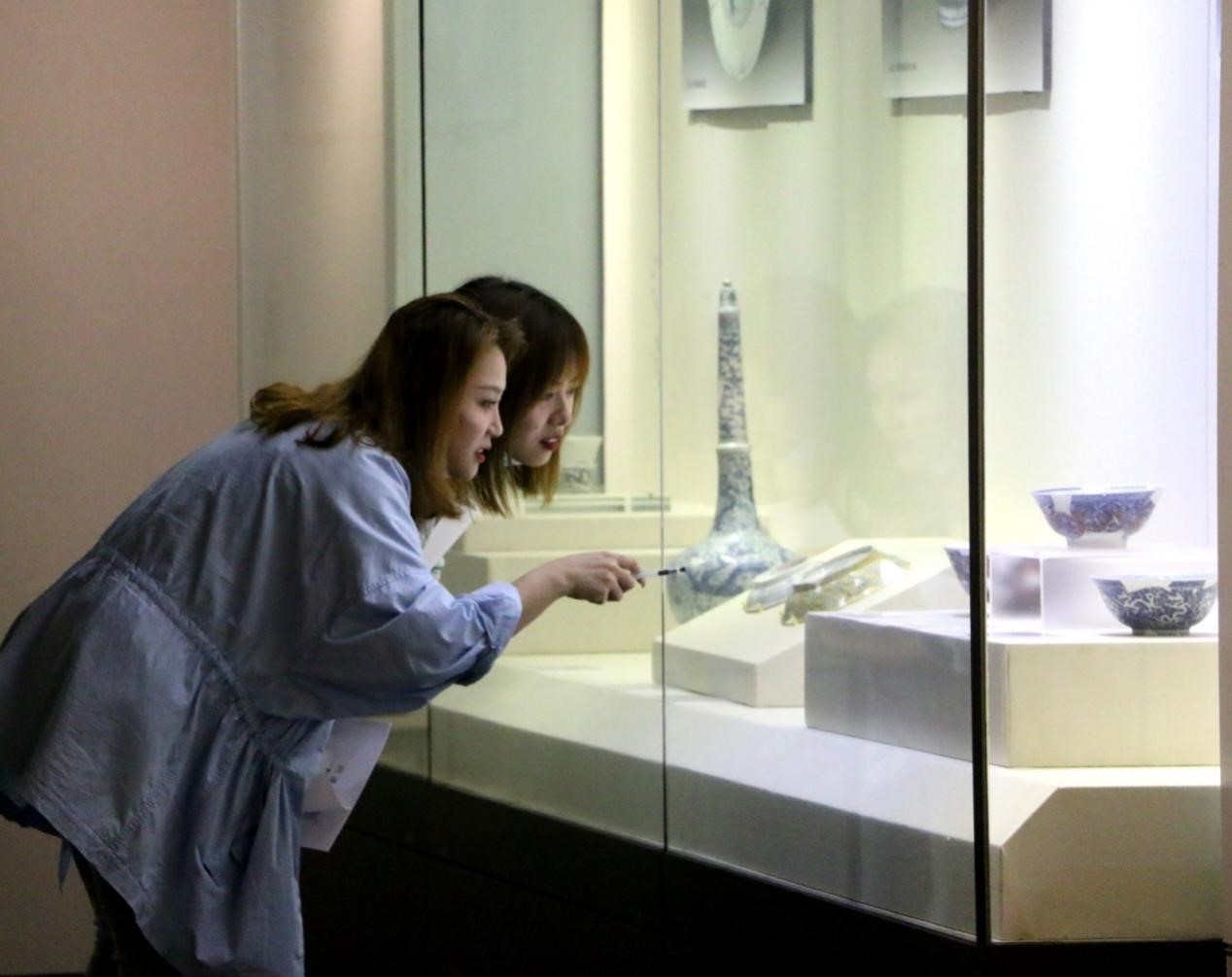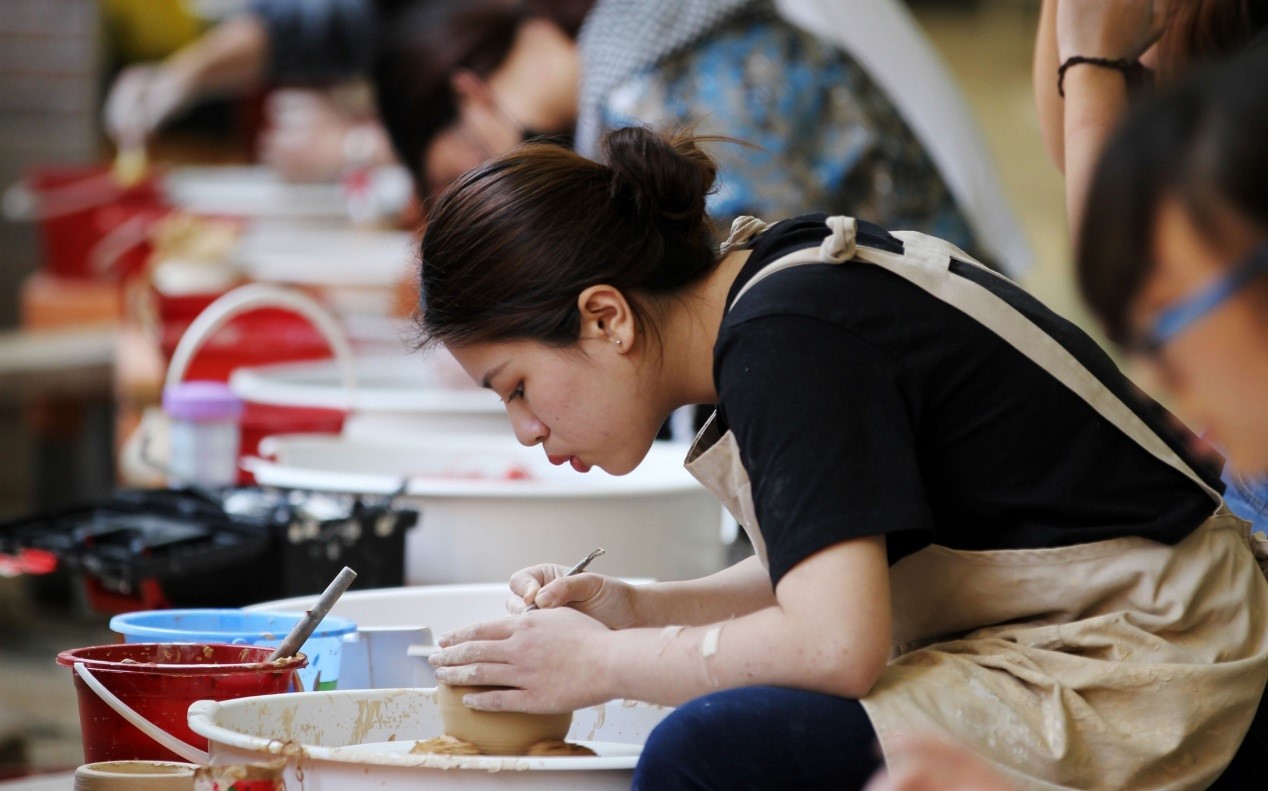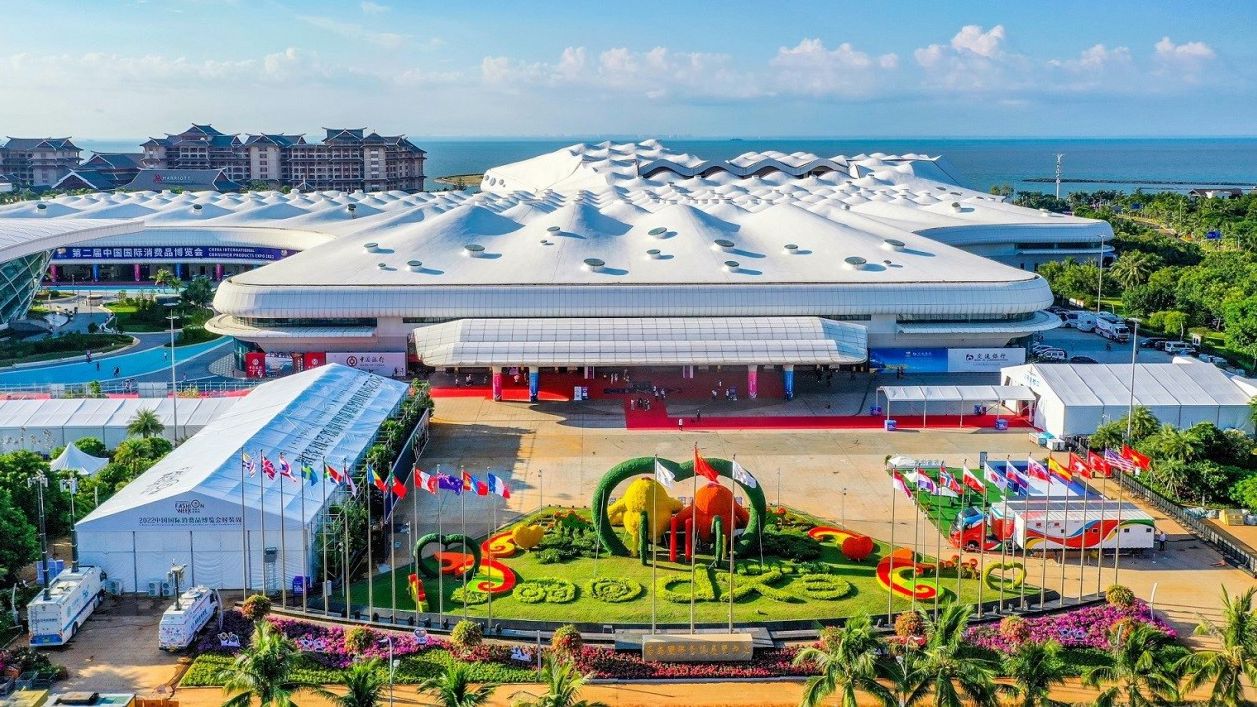China inaugurates world's first "gene bank" of ancient ceramics
The world's first "gene bank" of ancient ceramics was recently inaugurated at the Jingdezhen Imperial Kiln Museum in Jingdezhen, east China's Jiangxi province.

An exhibition of ceramics ware with dragon patterns produced in Jingdezhen is held by the Jingdezhen Imperial Kiln Museum, east China's Jiangxi province, May 2020. (People's Daily Online/Hong Yonglin)
The "gene bank," co-built by the museum and multiple top Chinese universities and relevant organizations, will carry out research programs on nearly 20 million pieces of ceramic specimens unearthed.
Researchers will use modern sophisticated equipment to make "gene" specimens in both physical and digital forms to decode the origin and development of the ancient ceramics civilization.
Jingdezhen is a renowned historical town that has made its name through ceramic-making. Its history of ceramic-making dates back over 2,000 years. Known as the "porcelain capital," Jingdezhen also has a 1,000-year history of official-run kilns and a 600-year history of imperial kilns.
Tens of millions, maybe even hundreds of millions of pieces of ceramic specimens are buried at the imperial kiln site of Jingdezhen and surrounding areas. Kiln slag there is even as thick as a dozen meters.
The Jingdezhen Imperial Kiln Museum is built on the ruins of the imperial kiln site, and most of the exhibits displayed at the museum were spliced with ceramic fragments unearthed at the site.
Weng Yanjun, head of the Jingdezhen Imperial Kiln Museum, told People's Daily that intact collections of ceramics produced at the imperial kiln site are too precious to be broken for studies. According to Weng, ceramic specimens are a better choice, and at least 100 pieces of information can be extracted from one single piece of specimen.
Over the past years, the museum has launched academic exchanges and archaeological cooperation with multiple organizations, including Peking University, the Palace Museum, UCLA, the University of Tokyo and the Institute of Archaeology under the Chinese Academy of Sciences.

The China Jingdezhen International Ceramic Fair is held in Jingdezhen, east China's Jiangxi province, October 2020. Photo shows an employee of an e-commerce company hosting a livestream show at the event. (People's Daily/Hu Dunhuang)
They have collected nearly 20,000 pieces of data from over 10 kilns, which has preliminarily established a basic data base for the studies of ancient Chinese ceramics.
The preparations for the "gene bank" started in July last year and were joined by the universities and organizations in cooperation with the Jingdezhen Imperial Kiln Museum.
The "gene bank" integrates data collection, archaeological studies, scientific analysis, ceramics restoration and achievements demonstration.
It is scheduled to complete the first batch of nearly 10,000 ancient ceramics specimens fabricated in the Ming Dynasty (1368-1644) in a year and a half, and will spend another three to five years completing all the rest unearthed in Jingdezhen, Weng said.
Xiong Zhe, who heads a lab at the Jingdezhen Imperial Kiln Museum, told People's Daily that the "gene bank" mainly collects ceramic specimens in fragment, section, slice and powder forms.
The "gene bank" will share information about ceramic specimens with other institutions, Weng said. The information can be used to build elaborate models of exhibitions, cultural relics protection and 3D printing, and also offer science-based support for the development of ceramic cultural products, as well as the construction of digital museums.

A student learns pottery making at the Xianghu campus of Jingdezhen Ceramic University, east China's Jiangxi province. (People's Daily Online/Xu Zheng)
The techniques of Jingdezhen's imperial kiln site have profoundly impacted the global industrialized development of ceramic-making. Blue and white porcelain wares produced in Jingdezhen are considered fine examples and replicated around the world. Today, the physical remains of ceramic works produced at Jingdezhen kiln sites are kept in many countries including Türkiye, Egypt, Japan, Vietnam, North Korea, Italy, France and the Netherlands.
"After the completion of the ‘gene bank,' we’d like to carry out active cooperation with academic institutions at home and abroad,” Weng said, adding that they would also like to foster research projects on global ceramics civilization and build an international platform for ceramics-related cultural exchange.
Photos
Related Stories
- World’s first “gene bank” for ancient ceramics to be built in China’s “porcelain capital” of Jingdezhen
- China’s first “gene bank” for ancient ceramics inaugurated in Jingdezhen
- China to build "gene bank" of ancient ceramics
- Centuries-old ceramics town embraces innovation
- Chinese descendants from Ho Chi Minh come to visit Foshan for the first time
- Tracing trade links through ceramics
- Across China: Chinese ceramics capital attracting foreign artists
- Ceramics reflect port's past
- Ceramics-making contest kicks off in China's Guangxi (7)
- Ceramics-making contest kicks off in China's Guangxi (6)
Copyright © 2022 People's Daily Online. All Rights Reserved.









